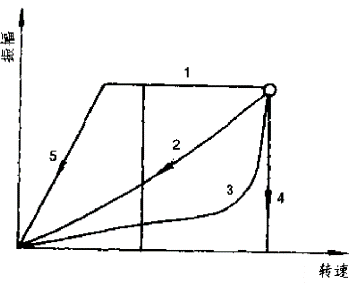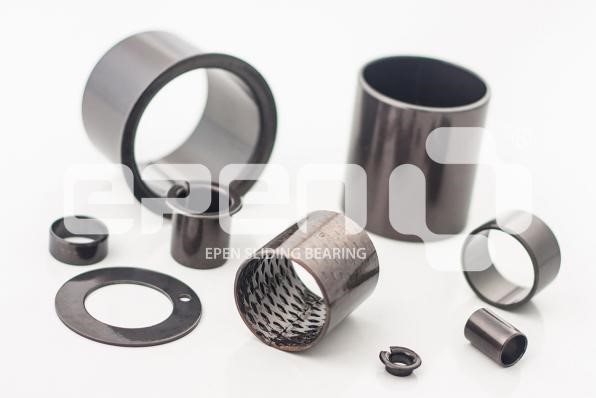1 Vibration classification of sliding bearing
The vibration of sliding bearing can be divided into two forms according to its mechanism:
One is forced vibration, also known as synchronous vibration. It is mainly caused by the unbalance of components on the shafting, misalignment of coupling, poor installation and other reasons. The frequency of vibration is the rotation frequency of the rotor and its frequency doubling. The amplitude of vibration increases with the increase of the speed before the critical speed of the rotor. If it exceeds the critical speed, it decreases with the increase of the speed, and there is a resonance peak at the critical speed;
The other vibration is self-excited vibration, also known as subsynchronous vibration. That is, oil film whirl and oil film oscillation. Its vibration frequency is lower than the rotating frequency of the rotor (about half of the rotating frequency of the rotor). It often occurs suddenly at a certain speed, which is extremely harmful.
2 Vibration diagnosis mechanism of sliding bearing
In the design, manufacture and installation of the sliding shaft, the problems of reducing the forced vibration source, avoiding resonance and strengthening the dynamic stability of the oil film have generally been considered. Therefore, under normal working conditions, the vibration magnitude of lubricating bearing is limited to a lower level.
If the vibration of the bearing exceeds this level, it will indicate that it has produced some fault. In addition, as a response of the shaft after being subjected to excitation, according to the principle of frequency retention characteristics of linear system, it is possible to find the trace of various vibration sources from the analysis of its frequency components.
3 Vibration test
There are many kinds of sensors for measuring vibration, such as absolute type, relative type, acceleration type, velocity type, displacement type, etc. In the vibration test of sliding bearing, the selection of sensor type should not only consider the sensitivity, dynamic range, frequency response characteristics, environmental adaptability and reliability of the sensor itself, but also consider the installation conditions, measuring point direction and measuring point position. Generally, for sliding bearing with exposed bearing pedestal, absolute vibration speed or acceleration sensor should be selected; For the sliding bearing with the bearing seat hidden inside, the relative vibration displacement sensor is mostly used. As for the measurement direction, the radial plumb and horizontal are the main directions. The measurement point should be located at the place with the shortest vibration transmission path and the most sensitive to the vibration source.
4 Sliding bearing vibration diagnosis method
The commonly used vibration diagnosis methods for sliding bearings are as follows:
Time domain amplitude diagnosis method: this method is mainly used to calculate the root mean square amplitude in the time domain index of the vibration signal of the sliding bearing. When the root mean square value is greater than a certain limit value, the inspected bearing will be judged as faulty. This method is simple and easy, and is often used in simple diagnosis.
Time-domain waveform diagnosis method: This method is mainly used to analyze the law of the variation of the frequency amplitude of the vibration signal of the sliding bearing with the rotation speed, so as to distinguish whether the vibration of the inspected bearing is forced vibration (including resonance) or self-excited vibration. The following figure shows several typical vibration waveforms of different vibrations, which can be used as a reference for waveform diagnosis.
Several typical vibration waveforms
1 - Instability; 2 - Unbalance; 3 - resonance; 4 - Electromagnetic vibration; 5 - Loose base
Frequency domain diagnosis method: carry out spectrum analysis on the vibration signal of sliding bearing. According to the difference between this spectrum (spectrum to be inspected) and the vibration spectrum (standard spectrum) of sliding bearing when it is normal, and the corresponding relationship between the frequency components at the difference and the vibration source frequency, the existence, degree, category and cause of the fault can be determined. This is a more precise and reliable vibration diagnosis method. The characteristic frequencies to be diagnosed are generally shaft rotation frequency, half of shaft rotation frequency, frequency doubling of shaft rotation frequency, etc.
More about EPEN E93 Bushing:
E93 is a high-density special copper bearing alloy as a matrix material CuSn rolled into having a carrying capacity, good wear resistance characteristics. Based on the good performance of copper easy processing and advanced tooling, E93 bearing surface of the strip can be processed to adapt to a variety of working conditions of oil pockets (standard products for the diamond oil hole), tank, so that the bearing can be stored in use a lot of grease, oil film at the beginning of work, to reduce the coefficient of friction, the work to extend the refueling interval period, effectively improve the bearing life. Compared with the traditional copper sleeve.





